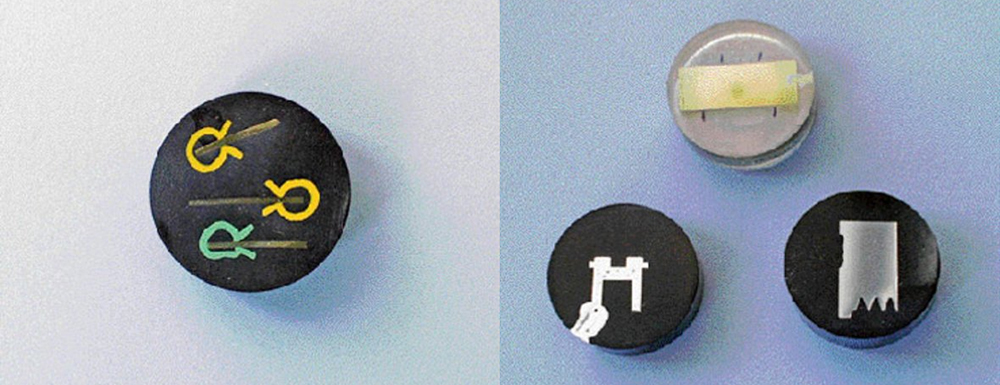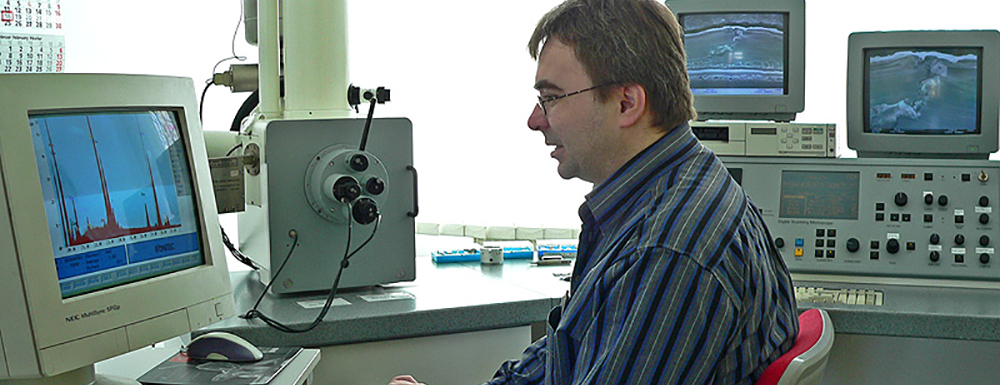Light-optical microscope
Common method of surface analysis. This method of analysis is used to show up many different coating systems in cross-section, define their characteristics and examine their structure, to enable surface flaws and coating defects to be detected and visualised. Etching enables the contrast to be increased with a view to picking out specific differences in the image.
Measurement of the coating thickness under the light-optical microscope (DIN EN ISO 1463) is often used as a reference for comparing other thickness measuring methods.
Scanning electron microscope
View of surfaces at a higher magnification in comparison with the light-optical microscope. Images show the surface structure at an enhanced depth of focus.
This is of particular interest in these cases:
- Parts with textured surfaces
- Adhesion problems in coated parts
- Analysing the surfaces of breakages.
Energy dispersive analysis (EDX) allows qualitative and semi-quantitative statements about the element composition of the specimen (area) and microscopically small particles. An EDX analysis can be used to show the existence of elements with an atomic number of 6 (carbon) and above. Elements such as hydrogen are not included. This means that, within limits, organic substances can be detected. The detection threshold will depend to a large extent on the atomic weight of the element being examined and will lie between 0.1 and 0.5 per cent by weight for most elements.
Equipment: Scanning electron microscope with EDX analyser
 Deutsch
Deutsch
 English
English





